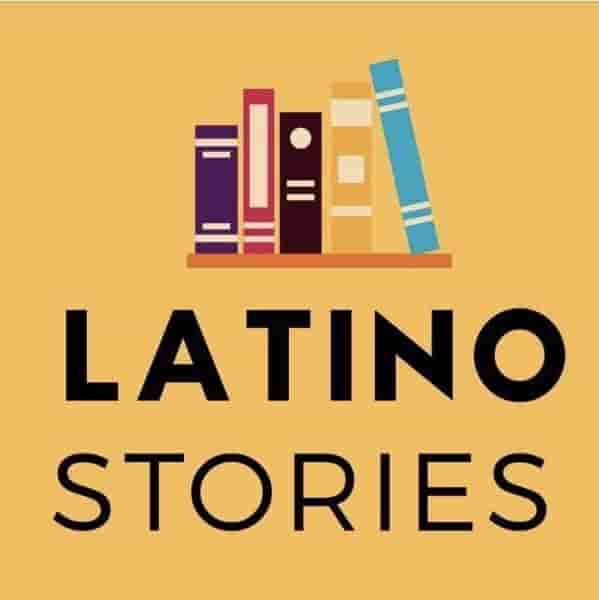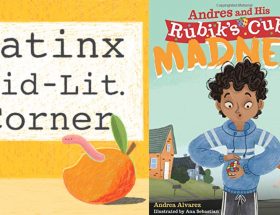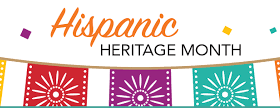
Meet the Survivor, Creator, and Author: Oriel María Siu
Welcome to the Latinx Kid Lit Corner. In this edition, we had the pleasure of interviewing writer, scholar, and educator, Dr. Oriel Maria Siu. Her latest children’s book title, Christopher the Ogre Cologre, It’s Over! (2021), is being used in grade schools and on college campuses to dispel myths about how the Americas were discovered by Christopher Columbus. The book is now available in Spanish, so we tracked her down to shine a light on her incredible story as a Náhuatl/Pipil/Chinese author.
Steve: You had quite the journey as a teenager. As teens, most of us experience the rigors of discovering our identity and dealing with awkward biological changes. However, you were uniquely faced with having to fully up-root your life in Honduras and move to the U.S.
Tell us how difficult it was to settle into a foreign country. What were some of the more difficult challenges you encountered, and how were you able to find the focus and drive to overcome those challenges?.
Oriel: After my family and I survived a violent situation in Honduras, I found myself in Los Angeles less than a month later, completely isolated from my family. It was 1997. I was 16. I lived in the city of Hawthorne in the greater L.A. area. It felt like a different planet to me–so large and I hardly spoke the language. I felt very lonely, and after living in a tropical climate, I remember feeling cold for the first time in my life–empty. It was definitely one of the worst years of my life. I missed my family and Honduras, and began overeating to try and fill the vacío. Looking back, I had developed an eating disorder which spiraled into depression. I spent a lot of time at the closest beach that first year, eating. The ocean water was the only element that helped connect me to what I knew as my home in Honduras. I cried so much the first two years.
Steve: Being away from your family at that age sounds nerve-racking. Yet, you carried on and two years later got accepted into a state university. Amazing! How did you manage to do it?
Oriel: All my life I knew I’d go to college because my parents encouraged the idea all the time! We just didn’t know exactly how or where it would happen. So I’m pretty sure I made it into CSUN because I sought help- help figuring out what the steps to get into a university were, what the SAT was, how to apply for scholarships, help figuring out computers and how to surf the web, and help in understanding what an essay was! It didn’t help that my English wasn’t strong. My Honduran education didn’t teach me how to go about writing an essay, much less to think critically about my own experiences (or any experience, for that matter!). My schooling in Honduras did not teach us critical thinking for anything. All I had to do to excel at school in Honduras was to repeat whatever the teachers or books said. We wrote summaries, not essays. We memorized, never analyzed thoughts. And grammar was not particularly taught with care. So, the college entry essay to get into CSUN took me almost a year to write. Not because I didn’t know what to write about, but because the structure of it needed lots of help. The difficulties and challenges were plenty, to say the least, but what I do know is that being able to make it into CSUN, saved me. For the first time, I felt hopeful about the future again.

Steve: You were born and raised in Honduras, but you’re part Náhuat/Pipil Salvadoran-Guatamalan from your mother’s side, and Chinese Nicaraguan from your Father’s side. Humor us! What was the dinner table like growing up? More Guatemalan, Chinese, etc.?
Oriel: My mama didn’t know how to cook to save her life when she married my father! As an orphan who grew up at the Hogar del Niño in San Salvador, she had no idea what went on in the kitchen. She tells me that she didn’t even know how to boil an egg. Luckily for us, my dad knew how to cook and loves it. Born and raised in Bluefields, Nicaragua, as a teenager, my Chinese grandparents sent him to China to study high school and learn the Cantonese ways. During his four years there, he learned to cook and speak fluent Cantonese. He’s the one who taught my mom how to cook. So food at home was definitely more Cantonese than Honduran. Cantonese dishes would be had with frijoles refritos, or plátanos, or both, and always with chile chiltepe.
Steve: Let’s dive into the world of children’s books. You mentioned the birth of your daughter as being the fuel that lit your fire. How important is this latest chapter in your career?
Oriel: When I became a mother to Suletu 8 years ago, I started looking for books to read to her. Yet despite there being thousands of books in the children’s sections of those beautiful Seattle public libraries, I was utterly shocked at the lack of books and stories I wanted to read to her. Books mostly centered white children and their lived experiences, promoted stereotypical gender roles, racial stereotypes, and hardly ever broke away from Eurocentric imaginaries or shallow celebrations of diversity.
The landscape of children’s literature has begun to change in the past five years or so, with some beautiful books making it out into the visible market. Black and Indigenous voices and stories, trans and LGBTQ voices, Brown and Asian voices, and other historically marginalized words have been able to break through the well-guarded publishing institutions. Still, however, the numbers are telling. According to the Cooperative Children’s Book Center at the University of Wisconsin-Madison, there are still more children’s books with animal characters in them, than there are children’s books with children of color characters. The problem, however, runs deeper than just representation. The landscapes of children’s books continue to remain within the limits of Eurocentric imaginaries. Publishing institutions, even when they have raised their so-called diversity numbers by a few, continue to be directed by those who think that books like mine do not belong in every classroom. Or any classroom. Books that teach the real history of the Americas for children, are still mostly absent from school and library bookshelves throughout the Americas. We have to write them.
This is why I do not write pretty scripted fairy tales that many parents and teachers love reading to children. I don’t write to enter shallow celebrations of “diversity” either (because “diversity” is what children’s books like to talk about when the adult authors attempt to avoid conversations on racism). My books speak truths, break myths, and undo foundational fairytales so that my daughter and all children of the Americas are no longer lied to. So that they may openly and without reservation, normalize talking about topics that, whether we like it or not, shape us and our environments. And so they may also find maps to their own stories and find the courage to tell them.

Steve: I love that. I also love how your latest book creatively depicts the European conquistadors as ruthless ogres. Genius! It’s fun, quirky, and educational. I thought the artwork did a great job of illustrating the conflicts and horrors of the conquest. I’d like to give Victor Zuniga a high-five for his contribution as the illustrator. From published scholar to kids book author, in your experience how different was it getting your children’s books published? Was it more difficult finding support for your work in Kids Lit? Could you offer any insight or advice for aspiring Latinx children’s book authors?
Oriel: Many people think that writing children’s books is an easy task. Quite the contrary. From the conceptualization of the idea, to the writing and editing, to the conceptualization and creation of the illustrations, cover, funding the illustrator, a translator, to the process of book design, to the publishing and book website design, to the bookshelves and distribution, to the book talks, tours, and marketing… It is quite the process, and requires loads of work! I know, because I self published and powered through the many stages.
My first book, Rebeldita the Fearless in Ogreland, took at least 7 years to bring into the world. The second book, Christopher the Ogre Cologre, It’s Over! took some 13 years, total, to see the light of day. The conceptualization of the idea, the how exactly will I go about telling these stories is where I take most of my time. It took years in both cases. How do you tell stories that are not easy to hear, to both children and the adults who will read it to them? How do you make ugly history, engaging and fun? How will my writing empower children? Are the main questions that I need to make sure I can answer clearly before I get to the actual writing.
The writing itself is the easiest, and funnest! Once I have a very clear idea of the plot and all the elements of the story, the writing is extremely enjoyable for me. Mostly because my daughter, Suletu, likes to also be part of that process. She’s the one who gets to hear the rhymes out for the first time and makes sure to let me know what works or doesn’t work for her. She has become my personal live-in editor! Haha. And she couldn’t be better at it.
Publishing is an incredible amount of work. It has been nonstop for me since Christopher the Ogre Cologre, It’s Over! came out August 2022. The main advice I can give future or current authors who are looking to publish on their own is this:
Make sure your book has a beating and resisting heart. Your book has to be solid, strong to make it through the process. You have to be absolutely in love with the story, stand by it, and then invite others to love it as much. That is hard to do. But even when you hear the noes, because there will be many, know that if your story is well told and connects with people beyond the surface level, it will make it through.

Today, whether you take the traditional publishing route or self publish you must facilitate the road for it, and be ready to push through the process. Which does not end at publishing. In this sense, publishing is like birthing. Even when the book is out, you must still hold its hand, take care of it, show it the way, and learn to let it go so that it can work its own magic.
Beyond doing a great job as creators and writers of color, I also believe our own communities must insist and demand our stories. We need to become a solid supportive base for our story tellers to have fertile ground in which to flourish. This means supporting independent bookstores, helping get our books into libraries, reading to our children stories of our own (alongside all others!), and most importantly, normalizing the practice of writing for children so that they may soon think it absolutely normal to write and publish their own stories and words as well. My daughter, for example, is already writing her fifth book, and she thinks it is absolutely possible to get her books published; whether she will get published, or not, is not even a question for her.
For more information on Oriel Maria Siu and her books, visit her website at https://www.orielmariasiu.com/
That concludes this edition of the Latinx Kid-Lit Corner. I hope you found this interview insightful. Give us your thoughts. Send me an email. I’m open to your suggestions for future books and creators to feature on the Latinx Kid-Lit Corner. Email me at [email protected] or DM me on Instagram @tropicsalvi.
Follow us:






































